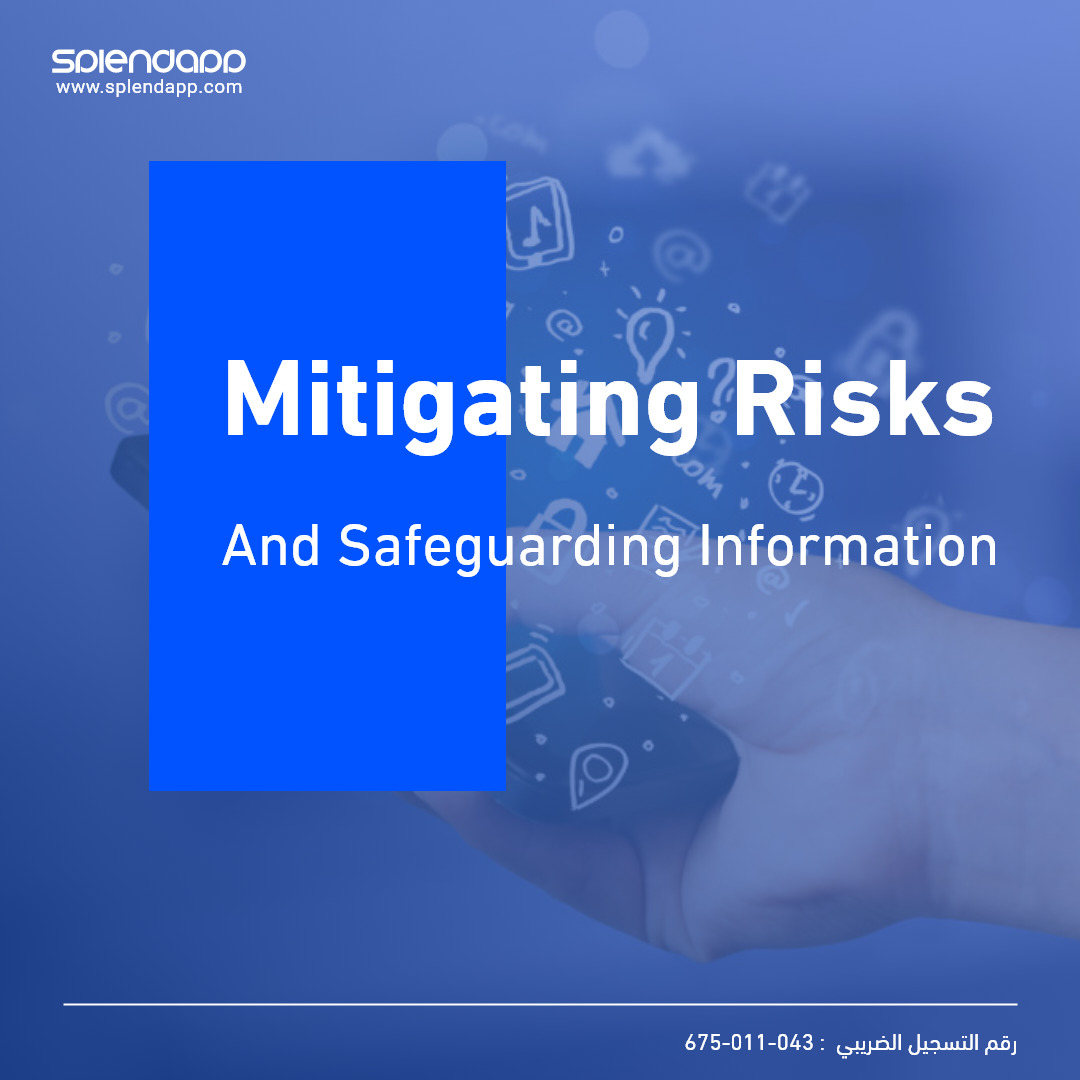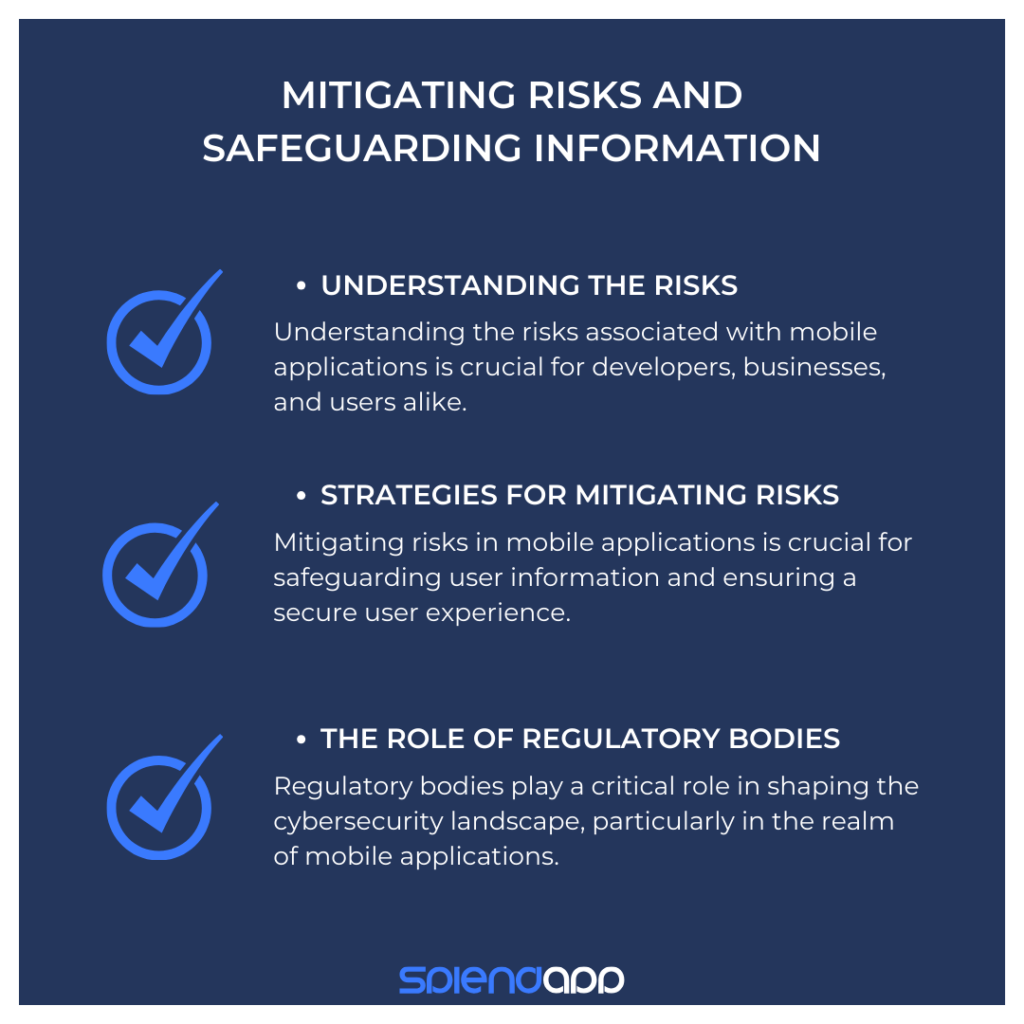

Mobile applications have become an integral part of our daily lives, offering a wide range of functionalities, from communication and entertainment to finance and healthcare. As the reliance on these applications continues to grow, so does the importance of Mobile Apps and Cybersecurity to protect user data and maintain the integrity of the services provided.
This introduction explores the landscape of mobile apps and cybersecurity, highlighting the necessity to mitigate risks and safeguard information. With the increasing sophistication of cyber threats and the vast amount of personal data stored on mobile devices, developers, businesses, and users must be vigilant and proactive in implementing robust security measures.
In the subsequent sections, we will explore the risks and challenges associated with mobile app cybersecurity, strategies for risk mitigation and information protection, the role of regulatory bodies, and best practices for users, developers, and businesses alike. The ultimate goal is to foster a comprehensive understanding of mobile app cybersecurity, empowering all stakeholders to contribute to a safer digital world.

The rapid proliferation of mobile applications has brought about convenience and efficiency in various aspects of our lives. However, this surge in mobile app usage has also attracted cybercriminals, making cybersecurity a top priority for businesses, developers, and users. Ensuring the security of mobile applications is paramount in mitigating risks and safeguarding sensitive information.
Understanding the risks associated with mobile applications is crucial for developers, businesses, and users alike. Mobile apps can contain vulnerabilities that may lead to various security issues if not properly addressed. Below is a detailed analysis of the potential risks involved:
1. Data Breaches:
Sensitive Information Exposure: Mobile apps often process and store sensitive user data such as personal information, payment details, and login credentials. If the app has vulnerabilities, this data could be exposed to unauthorized parties.
Lack of Data Encryption: Transmitting or storing data without proper encryption makes it susceptible to interception by attackers.
2. Malware and Ransomware:
Malicious Software: Users can inadvertently download malware through apps, leading to data theft, device malfunction, or ransom demands.
Hidden Functionality: Some apps may have hidden functionalities that can be exploited to perform malicious actions without the user’s knowledge.
3. Phishing Attacks:
Deceptive Practices: Cybercriminals can use mobile apps to conduct phishing attacks, tricking users into revealing their personal information or login credentials.
Unsecured Communication: Apps that do not securely communicate with servers can expose users to man-in-the-middle attacks, where attackers can intercept sensitive information.
4. Insecure Data Storage:
Local Storage Vulnerabilities: Storing sensitive data locally on the device without proper security measures can lead to data exposure, especially if the device is lost or stolen.
Cloud Storage Risks: If cloud services are used for data storage, inadequate security practices can lead to unauthorized access.
5. Lack of Encryption:
Unencrypted Data Transmission: Transmitting data without encryption makes it vulnerable to interception and unauthorized access.
Weak Encryption Algorithms: Using outdated or weak encryption algorithms can compromise data security.
6. Insufficient Authentication and Authorization:
Weak Password Policies: Apps that do not enforce strong password policies are more susceptible to unauthorized access.
Lack of Multi-Factor Authentication: The absence of multi-factor authentication can make it easier for attackers to gain access to user accounts.
7. Outdated Software and Libraries:
Use of Vulnerable Third-Party Libraries: Relying on outdated or vulnerable third-party libraries can introduce security flaws into the app.
Lack of Timely Updates: Failing to update the app regularly can leave known vulnerabilities unpatched, increasing the risk of exploitation.
Mitigating risks in mobile applications is crucial for safeguarding user information and ensuring a secure user experience. Below are comprehensive strategies to address and reduce potential risks:
1. Implement Secure Coding Practices:
Code Review: Regularly review code to identify and fix vulnerabilities.
Input Validation: Ensure that all user input is validated to prevent injection attacks.
2. Conduct Regular Security Audits and Testing:
Penetration Testing: Conduct penetration tests to uncover vulnerabilities.
Automated Scanning: Use automated tools to scan for common security issues.
3. Ensure Data Encryption:
Use Strong Encryption for Data Transmission: Employ robust encryption protocols like TLS for data transmitted over the network.
Encrypt Sensitive Data at Rest: Use strong encryption methods to protect data stored on the device or on servers.
4. Implement Strong User Authentication and Authorization:
Use Multi-Factor Authentication (MFA): MFA adds an additional layer of security beyond just username and password.
Implement Role-Based Access Control: Ensure that users have access only to the features and data necessary for their role.
5. Keep Software and Libraries Up to Date:
Regularly Update Libraries: Use the latest versions of libraries and frameworks to benefit from security updates.
Patch Vulnerabilities Timely: Quickly apply patches and updates to fix known vulnerabilities.
6. Protect Against Malware and Ransomware:
Use Anti-Malware Tools: Employ anti-malware solutions to detect and remove malicious software.
Educate Users: Inform users about the risks of downloading apps from untrusted sources.
7. Secure Data Storage and Management:
Avoid Storing Sensitive Data on the Device: Minimize the storage of sensitive information on the device itself.
Secure Cloud Storage: If using cloud services for data storage, ensure that they adhere to security best practices.
8. Provide Security Training and Awareness:
Educate Developers: Provide training for developers on secure coding practices and common security threats.
Raise User Awareness: Help users understand the importance of security and how to use the application safely.
9. Implement Network Security Measures:
Use Secure APIs: Ensure that any APIs used by the mobile app are secure and have proper authentication.
Protect Against Man-in-the-Middle Attacks: Employ measures like certificate pinning to prevent these types of attacks.
10. Prepare for Incident Response:
Have a Response Plan: Develop and test an incident response plan to quickly address any security incidents.
Monitor for Security Incidents: Use monitoring tools to detect unusual activities that could indicate a security breach.
Regulatory bodies play a critical role in shaping the cybersecurity landscape, particularly in the realm of mobile applications. Their involvement helps to establish standards, enforce compliance, and protect user data. Below is a comprehensive overview of the various functions and impacts of regulatory bodies in the context of mobile app cybersecurity:
1. Setting Standards and Guidelines:
Development of Security Protocols: Regulatory bodies often provide guidelines and best practices for secure app development, data protection, and user privacy.
Industry-Specific Regulations: In sectors like finance and healthcare, there are stringent regulations governing the protection of user data.
2. Enforcing Compliance:
Audits and Inspections: Regulatory bodies may conduct audits to ensure that businesses are complying with established cybersecurity standards.
Penalties for Non-Compliance: Failure to comply with regulations can result in fines, sanctions, or legal actions, serving as a deterrent and encouraging adherence to security protocols.
3. Protecting User Data and Privacy:
Data Protection Laws: Many regions have enacted data protection laws (such as GDPR in Europe) that mandate businesses to protect user data and respect user privacy.
Guidance on Data Breach Response: Regulatory bodies provide protocols on how businesses should respond to data breaches, including notification requirements to affected users.
4. Promoting Transparency and Accountability:
Disclosure Requirements: Businesses may be required to disclose their data collection, processing, and storage practices, promoting transparency.
Holding Businesses Accountable: Regulatory bodies can take action against businesses that fail to protect user data, ensuring accountability.
5. Fostering Consumer Trust:
Building Confidence: By enforcing standards and holding businesses accountable, regulatory bodies help to build user confidence in mobile applications.
Educating Consumers: Regulatory bodies often engage in public awareness campaigns to educate users about cybersecurity and how to protect their data.
6. Encouraging Industry Collaboration:
Facilitating Information Sharing: Some regulatory bodies help to facilitate the sharing of cybersecurity threat information among businesses, enhancing collective security.
Collaboration on Security Standards: Working with industry stakeholders, regulatory bodies can help to develop and refine cybersecurity standards.
7. Keeping Pace with Evolving Threats:
Regular Updates to Regulations: As cyber threats evolve, regulatory bodies update regulations and guidelines to address new challenges.
Research and Development Support: Some regulatory bodies support research and development efforts to enhance cybersecurity measures.
In conclusion, securing mobile applications is a critical and ongoing endeavor, requiring the collective efforts of developers, businesses, users, and regulatory bodies. By adopting robust security practices, fostering a culture of security, prioritizing user privacy, and staying vigilant against evolving threats, we can mitigate risks and safeguard information, ensuring a secure and trustworthy mobile application ecosystem.
From here you can know more about Ways to Build a Secure Mobile App.